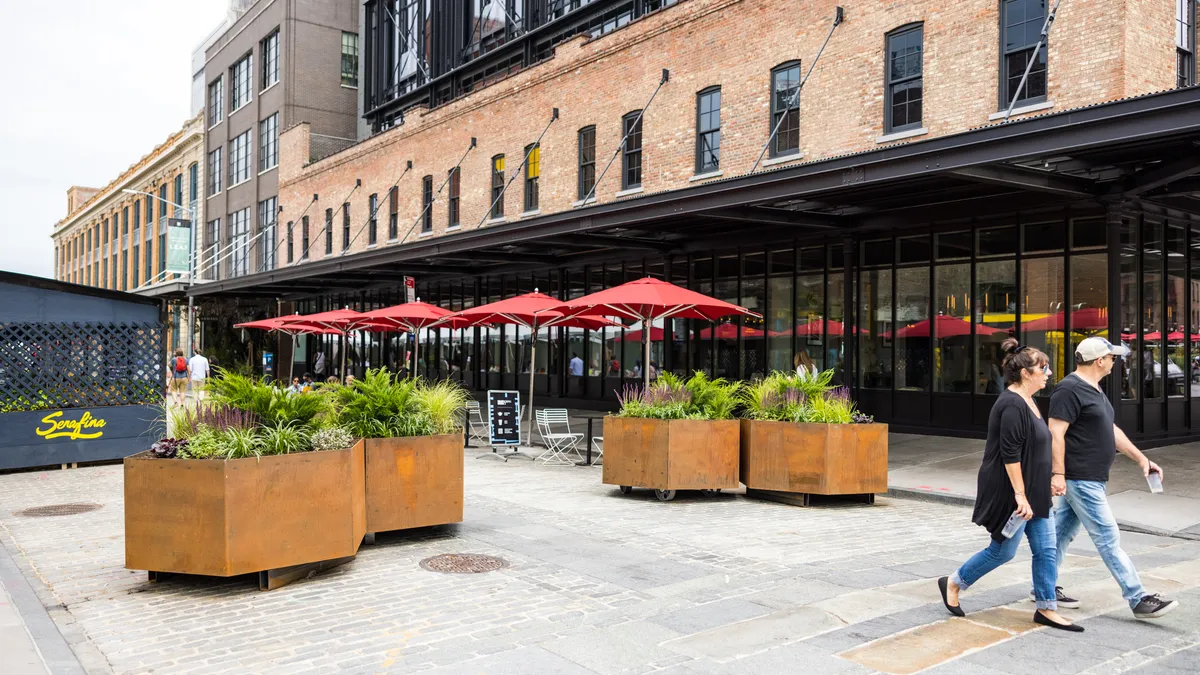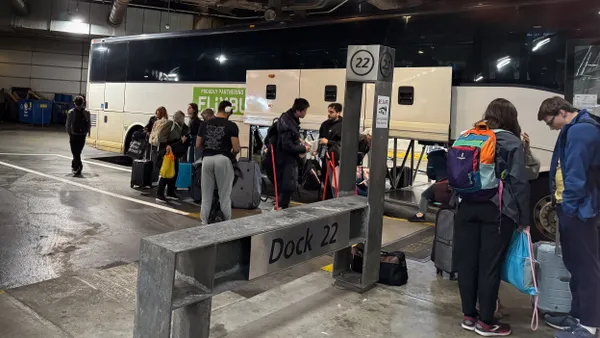Dive Brief:
- New York City’s Meatpacking District will permanently adopt an Open Streets program that was piloted during the COVID-19 pandemic, closing off several blocks to vehicle traffic.
- The Meatpacking Business Improvement District (BID) adopted an open streets initiative under a New York City pilot program in 2020, using temporary barriers to bar cars and trucks from several blocks in the lower Manhattan neighborhood. The district will now erect new barricades to convert six blocks to pedestrian thoroughfares as part of the city’s effort to make its Open Streets program permanent.
- BID Executive Director Jeffrey LeFrancois said there has been "no negative feedback" from businesses, who have seen more foot traffic. "The streets are more like a plaza, it’s just become a more pleasant place to be as a pedestrian."
Dive Insight:
Early in the pandemic, cities took rapid action to turn over streets to pedestrians and bikers. A combination of the need to socialize outside and plummeting downtown traffic meant that right of way changes, which normally take months of planning, occurred immediately. These transformations gave American cities a taste of the open streets concept more familiar in Europe.
LeFrancois said the change was especially well-received in the Meatpacking District. Beyond having more pedestrians and bikers taking advantage of empty cobblestone streets, LeFrancois said the street closures allowed businesses to "quite literally think of the neighborhood as a canvas." Last year, the BID hosted an outdoor theater production where audience members sat on the curb and sidewalks. It also hosted the L.E.A.F. festival of flowers in June, which LeFrancois said would not have been as successful without the long-term traffic closures.
"Really the only frustration we see is from drivers who think they have the right to be on any road they want," he said.
As the city eyes its recovery from the pandemic, Mayor Bill de Blasio signed legislation this spring to make the Open Streets program permanent. He also announced an "Open Boulevards" initiative to expand 10 multi-block corridors for outdoor dining, cultural activities and art installations. For its Open Streets program, the Meatpacking District will install hexagonal planters at the ends of streets, which can be moved for emergency vehicles.
Other cities have struggled with whether or how to extend open streets programs that started during the pandemic. Denver announced in August that it would end its temporary shared streets program, slowly returning traffic to seven streets that had been shut off to traffic. However, the city said it recognized the popularity of the program and plans to develop guidelines around a potentially permanent shared streets program in the city.
DCist reported in July that Washington D.C. would reopen a stretch of the Adams Morgan neighborhood that was originally closed to traffic amid the pandemic. Meanwhile, California legislators are considering a bill that would make it easier for cities to adopt open or slow streets, which dedicate more space to people outside of cars.
In New York, LeFrancois said other BIDs have reached out to him about continuing their own open streets programs. National organizations have also offered assistance to community groups. The National Association of City Transportation Officials with support from Bloomberg Philanthropies gave 10 cities $50,000 in grants to support community engagement around open and slow streets.
Mark Gorton, founder of Open Plans and a livable streets advocate, said the Meatpacking District had a unique combination of factors that made it an obvious spot for permanent Open Streets. The neighborhood sits on a slightly different grid from other streets, it has wealthy business owners and residents and a "consensus building process that has built support," he said. However, that doesn’t mean other neighborhoods can’t replicate their success, Gorton said.
"You can see bit by bit that this is changing and neighborhoods are reclaiming more space," Gorton said. "This is not going to be a top-down effort, it will bubble up as neighborhood after neighborhood realizes how popular this is and how it’s possible to happen anywhere."











